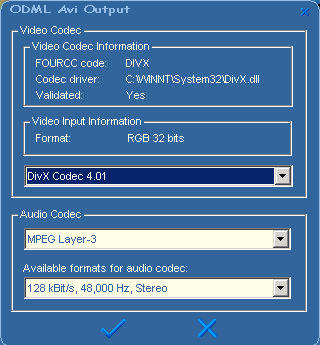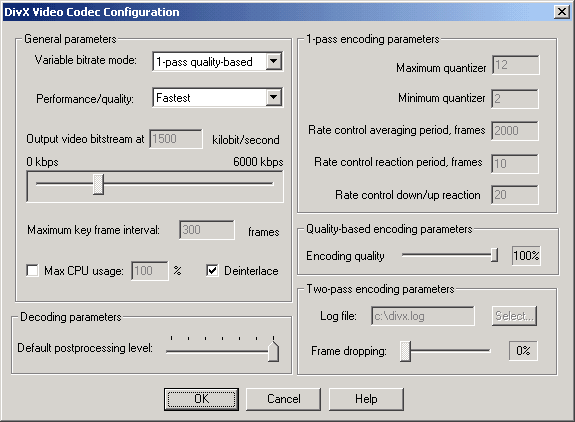MPEG-4 With The New Flask 4.1: Almost DVD Quality
A Tough Choice: DivX 3.20a Codec Still Better Than DivX 4.01 Codec, Continued
The new DivX 4.01 codec.
A wide variety of adjustment options with the DivX 4.01 codec.
We've arrived at the two best DivX codecs: The new DivX Version 4.01 has more options for settings available, while the earlier DivX 3.20a only allows the maximum data rate to be adjusted. The DivX 3.20a codec also let you set the focus and the number of key frames. On the other hand, the DivX 4.01 codec has considerably more to offer. First off, one can choose between various methods for the variable bit rate. Also, the precision of the DCT can be freely selected using the "Performance/Quality" option. The "Deinterlace" option produces a more homogeneous image - especially with difficult scene transitions. The option for setting Flask's CPU load by percentages is also completely new. That is totally different with DivX 3.20a codec: This codec reserves the maximum CPU load for itself. For die-hard MPEG freaks who want to optimize the encoding down to the very last bit, DivX 4.01 codec offers the option of manually setting all encoding parameters. However, the image quality attainable always depends on the complexity and the number of motion vectors within a video sequence. In a lab test we found that the DivX 4.01 codec, despite its numerous setting options, does not quite equal the image quality of the earlier DivX 3.20a codec. It bears mentioning that this was at the same data rate - we have always worked with a video bit rate of 1500 kBit/s in order to get a reasonable result at full PAL resolution in our European labs.
Get Tom's Hardware's best news and in-depth reviews, straight to your inbox.
Current page: A Tough Choice: DivX 3.20a Codec Still Better Than DivX 4.01 Codec, Continued
Prev Page A Tough Choice: DivX 3.20a Codec Still Better Than DivX 4.01 Codec Next Page Fine Adjustments: Resolution, Detail And Filter-
maalig Which is the best option for a dual display? Dual View, Homogeneous adapter or the heterogeneous adapter?Reply

